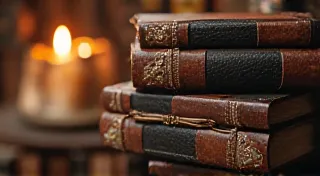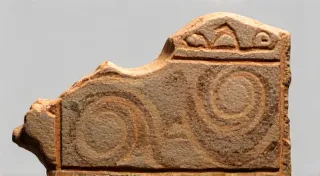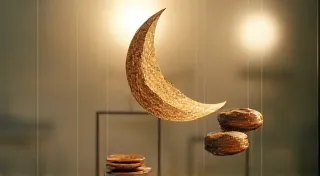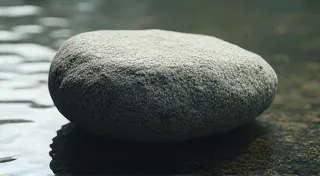The Geologist's Quill: Charting a Course Through Earth's Hidden Stories
There’s a peculiar resonance that occurs when a geologist’s eye turns not to data and diagrams, but to narrative. It’s not about abandoning the scientific rigor, but layering it – meticulously, beautifully – onto the canvas of imagination. My own fascination with geology began, as many do, with the simple wonder of a pretty rock. But it quickly deepened into an understanding of vast epochs, tectonic forces, and the slow, relentless sculpting of our planet. And it’s this deep understanding, this grounded perspective, that unlocks a new dimension in storytelling, particularly when crafting fictional worlds.
Imagine, for a moment, an antique accordion. Not a sleek, modern instrument, but one crafted from wood darkened by decades of use, the bellows bearing the subtle scars of countless performances. Feel the weight of it in your hands – the solidity of the construction, the echo of past melodies trapped within its chambers. Isn’t that what geological observation provides? A tangible connection to deep time, a feeling of weight and history that anchors imagination and imbues it with authenticity?

The Foundation of Worlds: Geology and Believability
Many fantasy and science fiction narratives fall flat because their environments lack a grounding in reality. A forest is simply trees and dirt; a mountain, a pile of rock. But geology reveals the why behind these landscapes. Why are mountains folded where they are? What geological processes created those peculiar rock formations? Understanding sedimentary layering, for example, can inform the visual language of a fictional landscape. A canyon carved by ancient rivers tells a story far richer than a generic chasm. Consider the volcanic landscapes of Iceland, or the layered sandstone formations of the American Southwest. These aren't just pretty pictures; they’re visual chronicles of Earth’s history, ready to be adapted and reimagined.
The beauty lies not in slavish replication, of course. A world can be fantastical and still be believable. It simply needs an internal consistency, a plausible geological framework. Is your fictional world tectonically active? If so, expect earthquakes, volcanoes, and the constant reshaping of the landscape. A planet with a thick, iron-rich core might experience stronger magnetic fields, influencing weather patterns and even the evolution of life. The very composition of the planet’s crust dictates the types of minerals that will form, and those minerals, in turn, will influence everything from resource availability to the color of the soil.
From Petrology to Plot: Using Minerals and Rocks as Narrative Devices
Minerals and rocks aren't just inert materials; they can be powerful narrative devices. A vein of rare, iridescent crystals might represent a source of magical energy, carefully guarded by an ancient civilization. A specific type of clay, known for its unique properties, could be essential for crafting powerful artifacts. Think about how cultures historically have valued certain minerals. Gold for its beauty and rarity, turquoise for its spiritual significance, amethyst for its purported healing properties. These cultural associations can be subtly woven into a fictional setting, adding depth and complexity.
Even seemingly mundane geological features can be imbued with meaning. A region known for its rich coal deposits might be a symbol of industry and hardship. A river valley formed by a glacier might represent a place of transition and renewal. These associations don't need to be explicitly stated; they can be subtly hinted at through descriptions, character interactions, and symbolism. The key is to ground the narrative in a believable geological reality, then layer the narrative elements on top of that foundation.

The Craftsman’s Eye: Appreciation for Detail and the Slow Work of Time
Restoring an antique accordion, like interpreting a geological outcrop, requires patience, a keen eye for detail, and a profound appreciation for the slow work of time. A craftsman understands that the beauty of an accordion isn't just in its function, but in the story it tells – the marks of the maker’s hands, the echoes of past melodies, the subtle signs of age and wear. Similarly, a geologist understands that a rock isn't just a lump of mineral; it’s a record of geological events, a testament to the forces that shaped our planet.
The same meticulousness that goes into repairing a cracked bellows or re-gluing a loose key can be applied to crafting a believable fictional world. Examine the geological data – the tectonic history, the mineral composition, the erosional patterns. Don't be afraid to ask questions, to challenge assumptions, to delve deeper into the details. The more you understand the underlying reality, the more convincing your fictional world will become.
Bringing it All Together: A Personal Reflection
My grandfather was a clockmaker. I spent countless hours in his workshop, mesmerized by the intricate workings of timepieces. It wasn’s just about the mechanics, though; it was about the craftsmanship, the history, the legacy of generations of clockmakers. Similarly, my exploration of geology has broadened my appreciation for the artistry of the Earth. The slow, relentless forces that shape our planet are, in a way, the ultimate artists, creating landscapes of breathtaking beauty and complexity.
Geology isn't just a science; it's a lens through which we can see the world in a new light, a way of connecting with the deep history of our planet and the stories it holds. By bringing a geologist's eye to our creative endeavors, we can enrich our narratives, deepen our understanding of the world, and create stories that resonate with authenticity and wonder. The layers of a story, like the layers of a sedimentary rock formation, are what make it truly compelling.

So, pick up your quill, examine the geological landscape around you, and begin charting your own course through Earth’s hidden stories. You might be surprised at the narratives you uncover.





